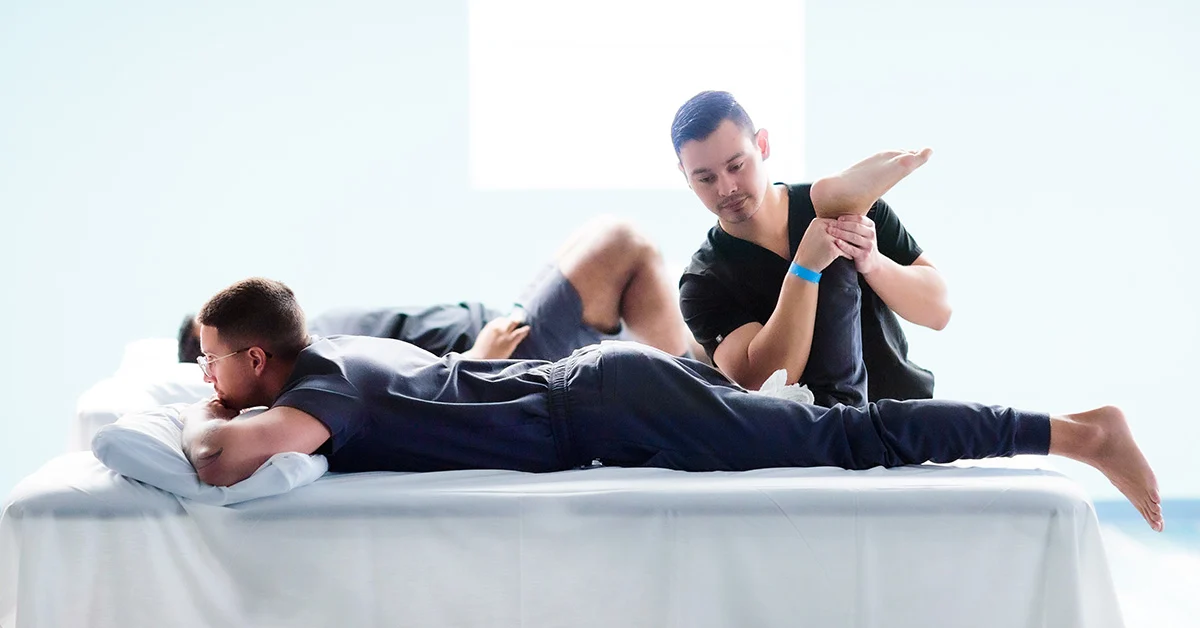HEALTH
Unlocking the Doors to Recovery: A Beginner’s Guide to Different Types of Rehabilitation

Restoring your health after an illness or medical event is vital to your ability to resume your life. That said, it doesn’t always happen on its own. Many people need help getting back on track.
Rehabilitation can help restore mental, behavioral, and physical function when they have somehow been compromised. The degree to which they have been affected may determine the degree to which you can restore your life. You may never be the same as you were before, but you can learn how to manage living with the changes.
There are many different types of rehabilitation, offering hope for a range of conditions. Appropriate rehabilitation may provide the best route to living your best life again. If you aren’t familiar with those types, here are some you might want to learn more about.
Mental Health Rehabilitation
Throughout most of human history, mental health issues were viewed as something removed from physical health conditions. Depression fueled by a broken heart or anxiety created by a traumatic experience weren’t like cancer or breaking a leg.
Far more recently, mental health has been inexorably linked to physical health. As medical research has displaced prior perceptions about mental conditions, treatment for them has evolved. That’s why today, the mind and body are equally addressed when people undergo mental health rehab.
Depression, anxiety, and post-traumatic stress disorder are three prevalent disorders addressed in inpatient and outpatient mental health rehabilitation. Depression alone encompasses multiple conditions, including major depressive disorders, bi-polar disorders, and seasonal affective disorders. A depression diagnosis may also stem from generalized anxiety disorders, postpartum depression, and depression related to certain physical illnesses.
Mental health rehab begins with exploring the root causes of an individual’s depression before making a diagnosis. Rehabilitative treatment may involve individual, group, and family therapy, cognitive behavioral therapy, learning to identify triggers, and using coping mechanisms. Rehab also often involves medication because mental health disorders change brain and body chemistry.
The goal of mental health rehabilitation is to provide knowledge, support, and skills people need to learn to live with their disease. With it, they can often return to jobs, parent again, build personal relationships, and find safe experiences in life that bring them joy. For many, mental health rehab is the path to living life again.
Addiction Treatment
When you hear the terms, “addiction treatment,” you probably think of rehabilitation for people who abuse drugs or alcohol. But addictions are all based on the brain’s perception of gratification and reward when engaging in a behavior. Once that behavior begins to interfere with someone’s physical and mental health, relationships, jobs, school, and daily lives, it has become addictive.
Substance use disorders involve drugs, alcohol, and tobacco. Those who suffer from mental health disorders often develop SUDs as well. These are referred to as co-occurring disorders and both must be addressed in rehabilitation therapy. In the United States, more than 21.5 million adults suffer from co-occurring disorders.
SUDs may be psychologically addictive or physically addictive, often distinguished as “addictive behaviors” versus “dependency.” Dependency develops when the body adapts to the presence of the substance, which results in physical withdrawal symptoms when stopped. Detoxification is an important part of inpatient and outpatient rehabilitation.
But people can also become addicted to sex, phones, gambling, gaming, shopping, exercise, work, and more. As is true with substance addictions, these are mental health conditions that can be treated during rehabilitation. Psychotherapy, cognitive behavioral therapy, acceptance and commitment therapy, and dialectical behavior therapy can be used in treatment.
Addiction treatment relies on patients learning how to replace dangerous behaviors with safe ones. Moreover, patients learn how to weigh the value of risk and reward when making choices in their lives.
Rehabilitation Therapies
Multiple therapies are used to rehabilitate patients following traumatic accidents and illnesses, as well as to treat chronic illness and disease. When people lose function in the wake of such events, these disciplines are used to treat them. They include physical, speech, occupational, and respiratory therapies, as well as cognitive and vocational rehabilitation.
Depending on the severity of patient limitations, these therapies may be provided in an inpatient or outpatient rehabilitation setting. Some patients may be restored to the full function they had prior to the event following rehabilitation. Others may never return to full function, but will reach maximum medical improvement, which means the best they can achieve.
Physical therapy addresses movement, strength, stability, and strategies that reduce physical pain. Occupational therapy teaches patients how to conduct activities of daily living, including use of adaptive tools such as wheelchairs. Speech therapy focuses on improvement of speech and language skills and swallowing, abilities most often affected by stroke.
Patients with diminished breathing will undergo respiratory therapy to learn how to help keep airways clear and to use breathing aids. Cognitive rehabilitation, designed to improve reasoning, thinking, and memory, is used often following stroke and traumatic brain injury. And vocational rehabilitation provides patients with skills and adaptive tools they need to return to the workplace after injury or illness.
These types of rehabilitative therapies are obviously used after traumatic events and surgical procedures. But they are also employed to help chronically ill patients as they become increasingly more limited by their disease. Restoring function and learning how to adapt to some loss of function is the goal.
On the Mend
The idea of rehab is often accompanied by negative connotations. But rehab is hope combined with hard work. Rehabilitation professionals and medical science work hand in hand to help patients move forward. Regardless of the type of rehab or the reason for needing it, the right one will put you on the mend.
Harper Harrison is a reporter for The Hear UP. Harper got an internship at the NPR and worked as a reporter and producer. harper has also worked as a reporter for the Medium. Harper covers health and science for The Hear UP.










